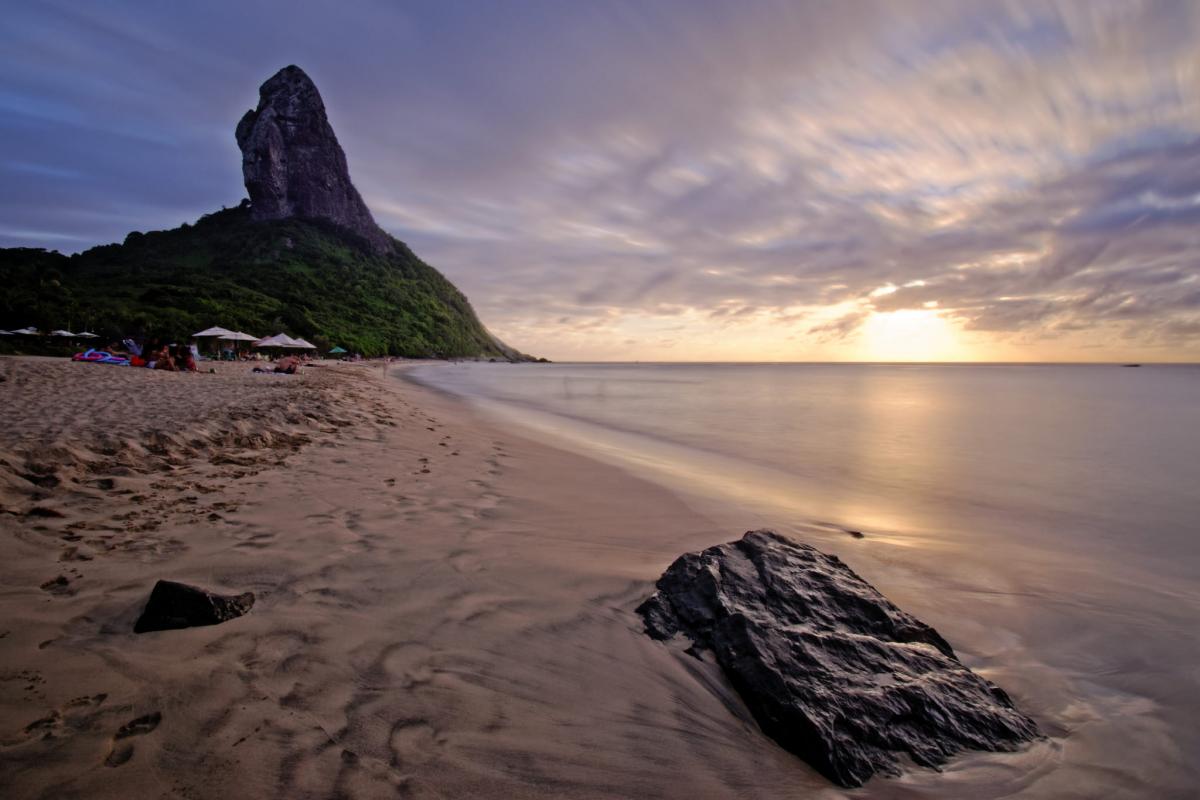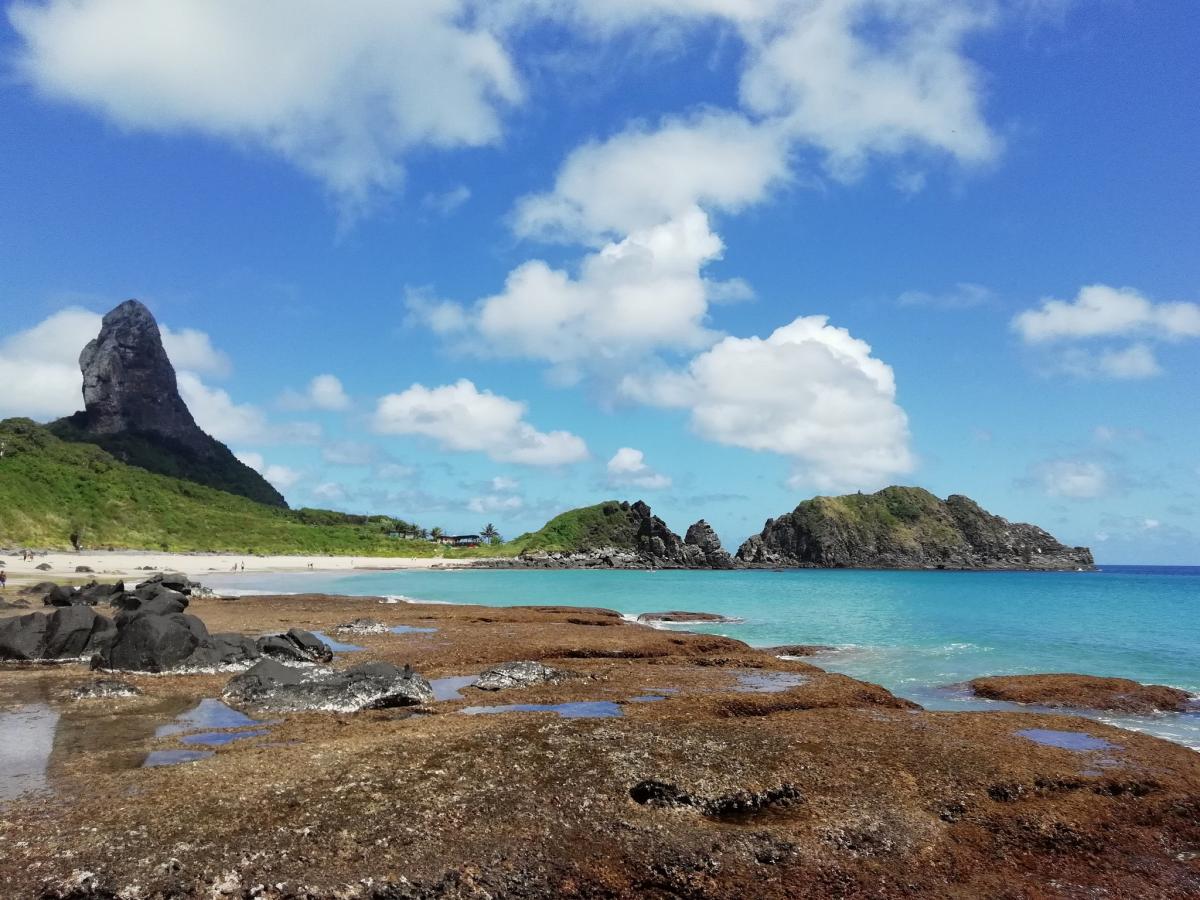PY7RP will be active as PY0F from Fernando de Noronha Island, IOTA SA - 003, in CQ WW DX SSB Contest, 28 - 29 October 2023.
He will operate in Single Operator All Bands Low Power Category.
Recent DX Spots PY0F
PY0F Log search QSL via PY7RP direct, ClubLog OQRS.
Ads for direct QSL:
Renner Pedroza, Rua Waldemar Nery Carneiro Monteiro, 475 / Apt 602, Boa Viagem, 51.030-140, Recife, Pernambuco, Brazil.
Fernando de Noronha Archipelago
Fernando de Noronha is a volcanic archipelago in the Atlantic Ocean, located about 200 miles northeast of the coast of Brazil and 4 degrees south of the equator. This part of the landmass, unites 21 islands with a total area of 26 square kilometres. Fernando de Noronha belongs administratively to the state of Pernambuco.
 Fernando de Noronha Islands. Author - Guto Balieiro.
Fernando de Noronha Islands. Author - Guto Balieiro.
Historical excursion
In 1501 or 1502 (the exact date is not determined by historians) the archipelago was discovered by merchant and cartographer Amerigo Vespucci. However, this group of islands was named after Fernano de Loronja, the sponsor of the expedition of the famous Florentine navigator.
Before Fernando de Loronha became a colony of Portugal in 1737, it had to be occupied by the Netherlands (17th century) and then by France (18th century). The Portuguese built a strong defence system of 10 fortresses on the archipelago. Nossa Senhora dos Remedios de Fernando de Noronha is the largest of them. It is well preserved up to the present day.
During World War II, the archipelago became the location of US troops, who maintained a missile tracking base here until 1959. This is evidenced by the many places on the island that still bear the names given by the Americans.
Since 1988, about 70 per cent of Fernando di Noronha has been set aside as a National Park. The archipelago was recognised as a UNESCO World Heritage Site in 2001.
Now this group of islands beckons travellers from all over the world with sandy beaches, beautiful landscapes and wild, untouched nature. However, due to strict environmental protection, the number of visitors is limited. The maximum number of tourists who can stay on the island at one time is up to 700 people per day. In addition, they are required to pay an environmental fee, the amount of which increases in proportion to the number of days they stay.
As for the locals, there are about 3,500 people living in the territory of Fernando di Noronha.
For tourists, many places in the archipelago are only accessible from 8:00 to 16:00. There is no artificial lighting on the beaches, so the turtles living there can live in natural conditions. It is worth noting that these animals are a real attraction in Fernando di Noronha. The adults are about 1.5 metres long and weigh 170kg.
The archipelago is also a major nesting ground for seabirds.
 Fernando de Noronha Islands. Author - Plinio Leal.
Fernando de Noronha Islands. Author - Plinio Leal.
Features of nature and local landscape
The Fernando di Noronha group of islands has never been connected to the mainland. Geologically, it is the tip of an underwater volcanic formation that rises from the sea floor. Because the reefs of the South Atlantic are separated from the Caribbean Sea by the outlet of the Orinoco and Amazon rivers, the reef communities for many endemic species here are very different.
The water around the islands of the archipelago maintains consistently high temperatures of up to 30 °C all year round. It is very clear, with good visibility even at 50 metres. Therefore, when boating or swimming in the African currents, it is difficult not to spot large ocean creatures such as sharks, sea turtles, mantas and dolphins.
The relative isolation from the mainland, visitor restrictions and the need for conservation make Fernando di Noronha an expensive holiday area. However, the lucky few who do manage to visit will be richly rewarded with enchanting views of this paradisiacal place and the beauty of its underwater world.
The archipelago's tiny territory is striking in its contrasting landscapes. In the south-east, the beaches are rocky and rugged. It is very windy, with high waves crashing over boulders as they hit the basalt shore. On this side is the mar de fora, that is, the outer sea, the open ocean. The vegetation in the south-east of Fernando di Noronha is rather sparse, mostly cacti and grasses.
However, to completely change your perception of the landscape of the archipelago is enough to move to the other side. Here you will see a beautiful sandy coastline with palm trees, ideal for relaxing, sunbathing and swimming in the sea water. Only the rocks scattered in this part of the land add aggressiveness. For example, Morro do Picu, the highest rock on the island (323 metres above sea level), is visible from almost anywhere on the island.
 Fernando de Noronha Islands. Author - Joe Guidobi.
Fernando de Noronha Islands. Author - Joe Guidobi.
Popular tourist spots and holiday areas
One of the best ways to see the whole of Fernando de Noronha and its unspoilt areas is to take a boat trip around the island. The views here are phenomenal, with long white-silver coastlines fringed by high cliffs and covered in natural green vegetation.
Boat trips usually include the main sights of the archipelago such as Lion's Cave, Praia dos Sanchos, the Two Brothers Islands and Ponto de Zapato, as well as stops at the most popular snorkelling spots. So if you have your own snorkelling equipment, bring it with you. Otherwise, it can be rented from any kiosk on the beach for around 25 Brazilian reais (US$8) per day, although prices can vary depending on the season.
For those who choose to snorkel in the waters near Baia do Sueste, where dozens of sea turtles swim gracefully and calmly through the water, it is worth remembering that touching the animals is strictly forbidden, as it may harm them.
With its diverse marine life and warm (28 and 30 degrees (82-86 degrees Fahrenheit)), crystal clear water (up to 30 metres (98 feet)), Fernando de Noronha is recognised as one of the best diving destinations in Brazil.
A unique ecological reserve, most of which is a national marine park, the archipelago boasts marvellous beaches, the best in Brazil. Among them there are three main ones - Praia de Leão, Praia do Sancho and Praia de Porcos.
Praia do Sancho beach is surrounded by a rocky slope that offers untouched wild landscapes. Praia de Porcos is slightly smaller and less sandy than its predecessor. However, the colourful water and waves crashing on the rocks create an unforgettable spectacle here.
A rather interesting place on the tourist map are the "temporary pools". One of them is located in the south of the island Lilha de Fernando de Noronha on the side of the beach Caeira Atalaya. At low tide, a pool is formed here, surrounded by rocks. It is only 60 metres deep, allowing you to view the local marine life, including small sharks, for several hours (until low tide).
For those who want to see the more diverse fauna of the archipelago, an excursion to Baia dos Golfinhos, the Bay of Dolphins, is recommended. Another attraction is the shark museum, where local varieties of these marine predators are on display. Also a very interesting experience awaits the tourist when visiting the TAMAR project, a turtle protection centre. Here there is an opportunity to see the newly hatched animals.
Fernando de Noronha has only 7 kilometres of asphalt road running from north to south. The rest is gravel pavement.
The largest town is Villa dos Remedios. It is basically a colonial-style village, with a population of about 3,000. From the days of former glory, there remains, among other things, the governor's palace, a church with a two-coloured facade and a few atmospheric buildings, such as the post office.
There is no crime on the island. Unlike most Brazilian cities, no one locks their house or even car doors here. This is partly due to the fact that getting to the archipelago, as well as leaving the area, is not easy. The locals know each other very well and easily identify newcomers.
The only real bar in Villa dos Remedios is Cachorro, which is located near the church square. Here you can taste fish in coconut milk and the "folk" Brazilian alcoholic cocktail caipirinha from sugar cane mixed with lime juice, sugar and ice.
A tourist travelling to this paradise on earth should keep in mind the restrictions. To get here you should register in advance through the tourist office and wait for your turn. It is also necessary to consider that this place is definitely more expensive than other tourist areas in Brazil. However, as many returnees confirm, a trip to Fernando de Noronha is worth every penny spent.

